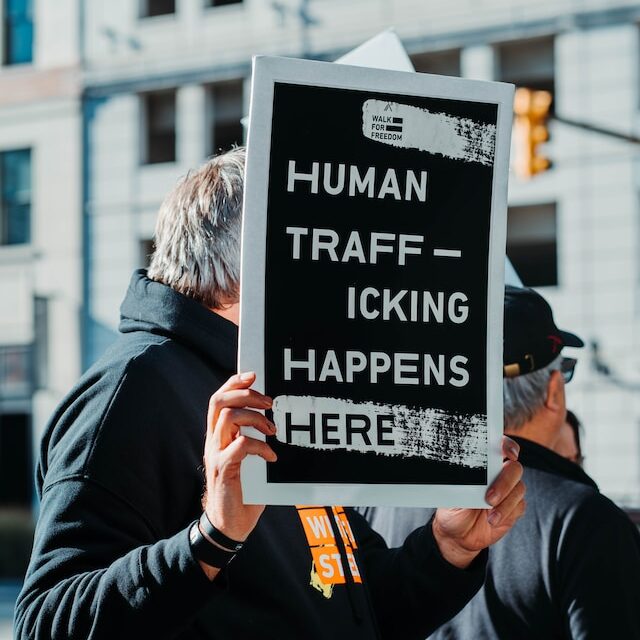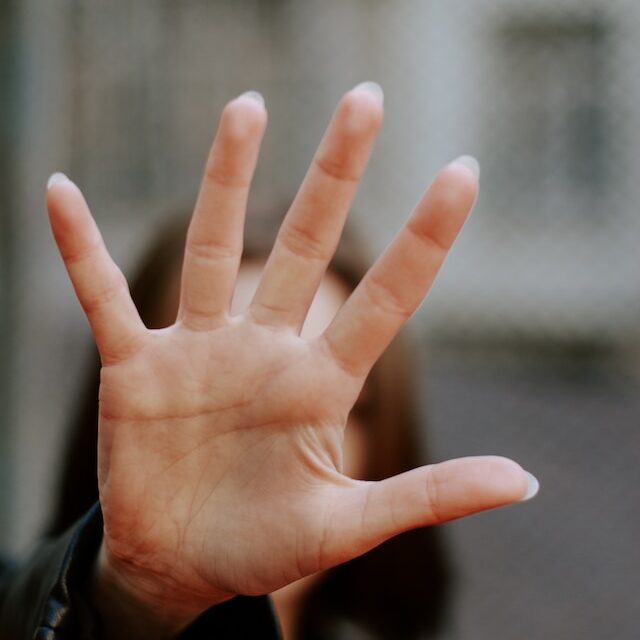
When they hear the words “human trafficking”, people often conjure up an image of dark back rooms, chained-up victims and offenders being exclusively male.
This is because, despite widespread reporting and clarification surrounding the issue, numerous myths and misunderstandings continue to influence public perceptions. It is crucially important, therefore, that these clichés and stereotypes be challenged, so all victims can be recognised and helped as effectively as possible. In this article, we shall be debunking eight frequent myths about human trafficking in an effort to create greater clarity about the issue.
MYTH 1: HUMAN TRAFFICKING ONLY HAPPENS IN CERTAIN REGIONS
Reality: Human trafficking is a global phenomenon, and happens everywhere around the world, in both developing and industrialised countries. Every single country is affected by the issue, whether it be as a country of origin, of transit, or as a destination. In Austria, too, people fall victim to human trafficking every year, experiencing sexual abuse, exploitative labour, and forced to beg or perform criminal acts.
MYTH 2: ONLY WOMEN AND GIRLS ARE VICTIMS OF HUMAN TRAFFICKING
Reality: Absolutely anyone can fall victim to human trafficking. Although statistics do show that girls and women are affected by human trafficking more often, boys and men are also regularly victims. This is also shown by the United Nations Office on Drugs and Crime (UNODC) in its annual report “Global Report on Trafficking in Persons 2022”. In the 166 states investigated, 60% of victims were women or girls, usually becoming victims of sexual exploitation. The 40% who were men or boys, by contrast, were overwhelmingly subject to forced labour. This doesn’t mean, however, that female victims are not also forced to do hard labour, or that male victims are not sexually exploited.
MYTH 3: VICTIMS OF HUMAN TRAFFICKING ARE ALWAYS PHYSICALLY IMPRISONED
Reality: Although this is indeed sometimes the case, not all victims are physically imprisoned or even kept locked up. This doesn’t mean they are not victims of human trafficking, however. Often they simply lack the financial resources, means of transportation, or a safe place to live. Some may fear for their safety, while others will have been manipulated so cleverly that they don’t even realise they are being controlled. Victims of human trafficking may have ambivalent feelings towards their situation, remain silent due to fear of their abusers, or experience feelings of shame. As a result, saving them is often far more complex than it may first seem.
MYTH 4: HUMAN TRAFFICKING IS ALWAYS SEXUALLY MOTIVATED
Reality: Despite the fact that sexual exploitation is a widespread motivation for human trafficking, it is in fact a highly diverse phenomenon which can take many forms and appear in many different industries. This is because no specific type of labour is considered to be human trafficking; rather, it is the conditions under which that labour is performed. The UN Human Trafficking Protocol defines human trafficking as “…the recruitment, transportation, movement, accommodation or acceptance of persons (…) for the purpose of exploitation”. This usually happens through “… the threat or use of violence or other forms of coercion, by kidnapping, fraud, deception, abuse of power or exploitation of particular helplessness”. Examples may include:
- Forced labour in a variety of different industries (including construction, gastronomy, the fishing industry, mining, etc.);
- Bonded labour;
- Slavery and exploitation in the household;
- Child soldiers;
- Child labour;
- Sexual exploitation of children, including commercial sexual exploitation;
- Sexual exploitation, such as forced prostitution;
- Organ trafficking.

MYTH 5: HUMAN TRAFFICKING ONLY AFFECTS PEOPLE FROM POOR CIRCUMSTANCES
Reality: Although poverty is a demonstrably high risk factor, of course, victims of human trafficking can come from a wide range of social classes and backgrounds. Other factors, such as a lack of self-esteem, gender, age, migration status, social exclusion, etc. are also important. People from different social classes can become victims of a variety of human trafficking situations.
MYTH 6: HUMAN TRAFFICKING ALWAYS HAPPENS ACROSS INTERNATIONAL BORDERS
Reality: It is widely, and wrongly, believed that human trafficking always happens across state borders. Human trafficking can in fact take place both across borders and within a country.
MYTH 7: PERPETRATORS ARE ALWAYS MEN
Reality This is false. When one thinks of human traffickers, it is tempting to imagine dark, secretive-looking figures dressed in dark clothing. It is important to emphasise, however, that in reality, human traffickers are highly diverse, and that there is no single appearance that can be described as “typical” of them. Human traffickers can be both male or female, and many have themselves been victims of trafficking in the past.
MYTH 8: VICTIMS OF HUMAN TRAFFICKING ARE USUALLY KIDNAPPED BY STRANGERS
Reality: Usually, victims of human trafficking are coerced by someone they already know and trust, such as a romantic partner, family members, often even their own parents, or friends of the family.
In those situations in which human traffickers do begin as strangers, they will often use recruiting methods to develop trust amongst their victims. Human traffickers often target their under-age victims through social media, for example (see also: cyber grooming).
Translated by Tim Lywood
#Menschenhandel #Mythen #Fakten #Menschenhändler #AgainstHumanTrafficking #GegenMenschenhandel #EndExploitation #EndTrafficking #HopeForTheFuture #Österreich
